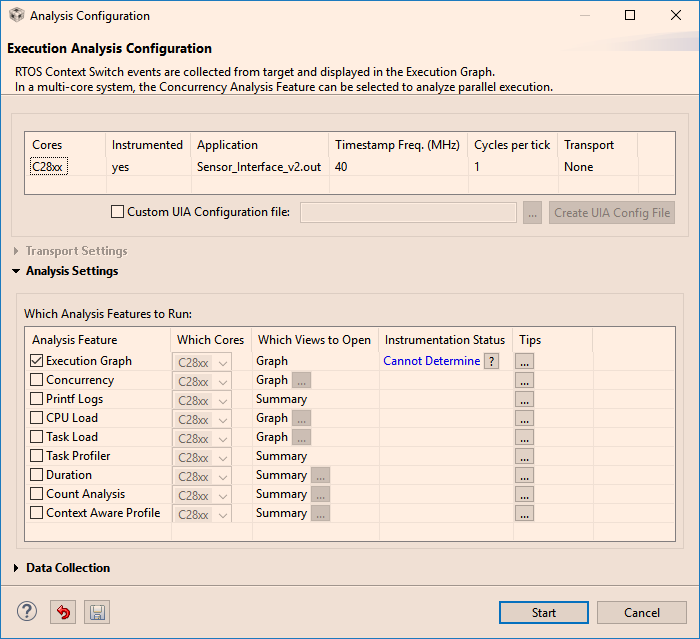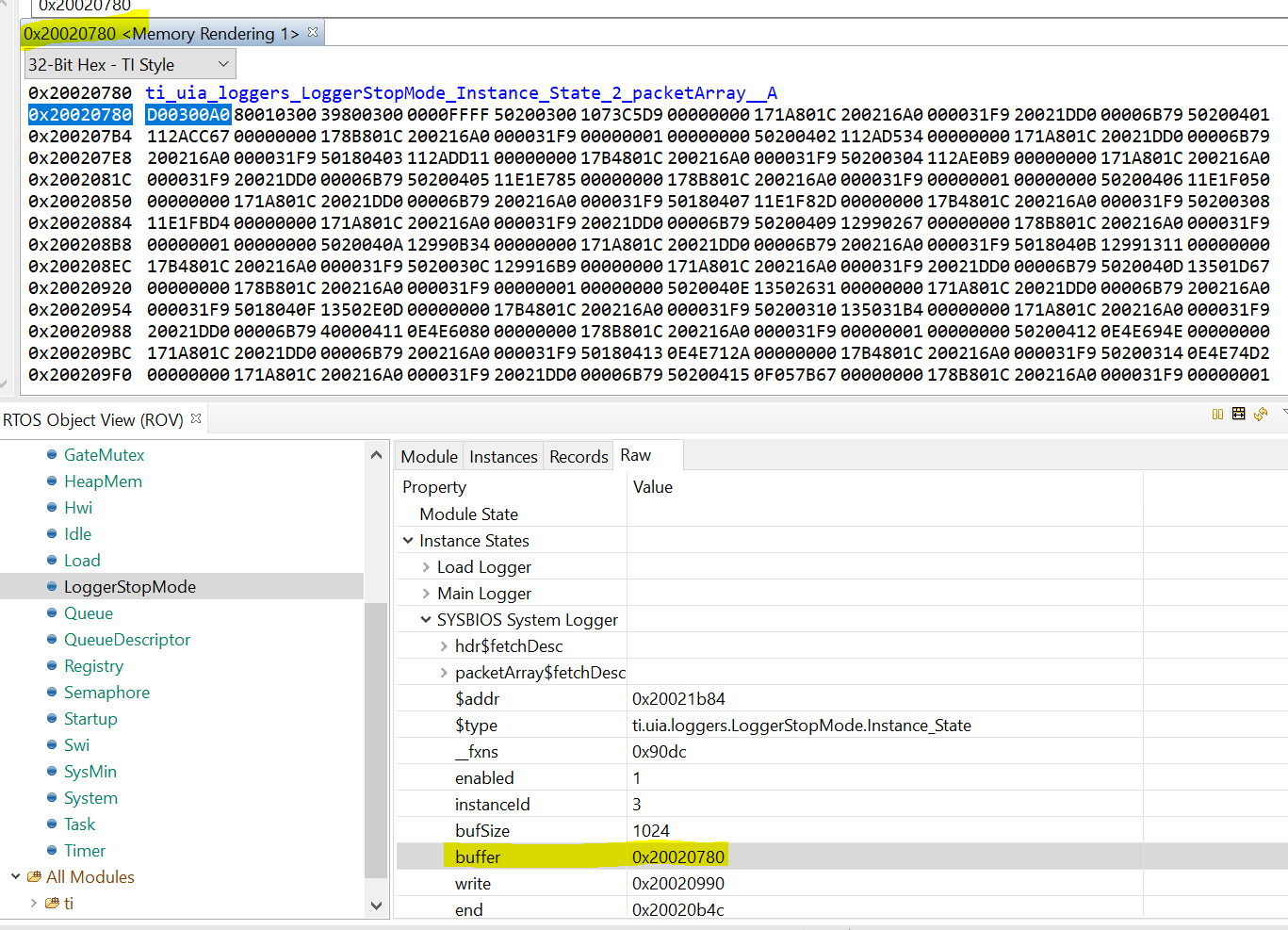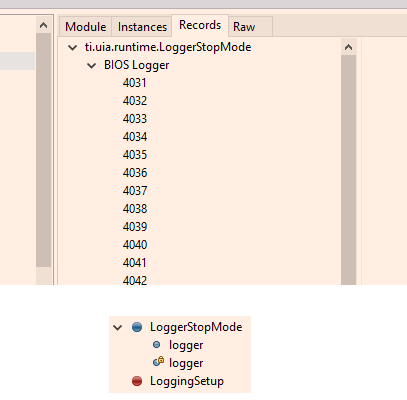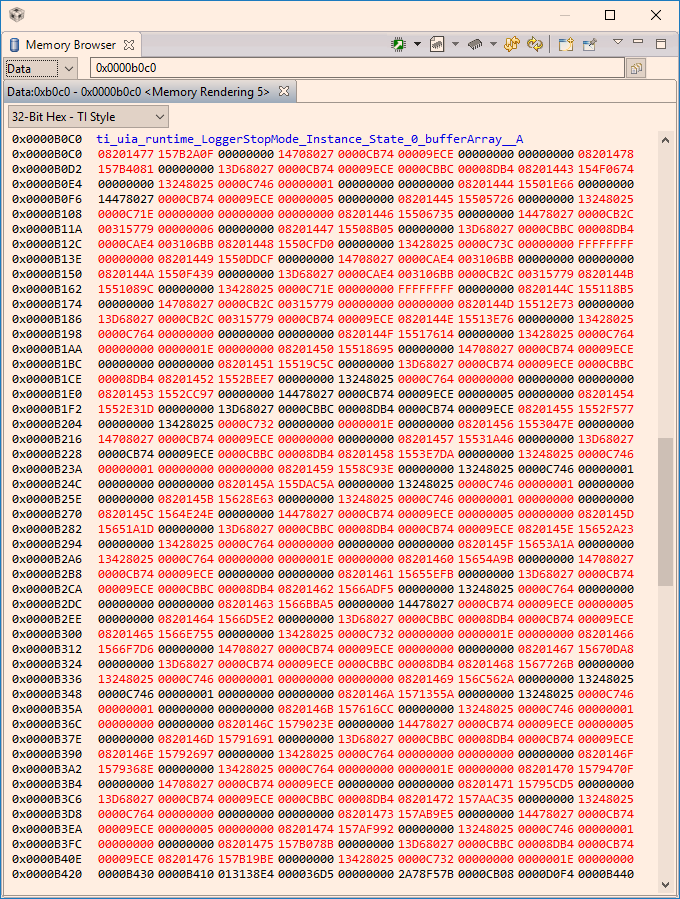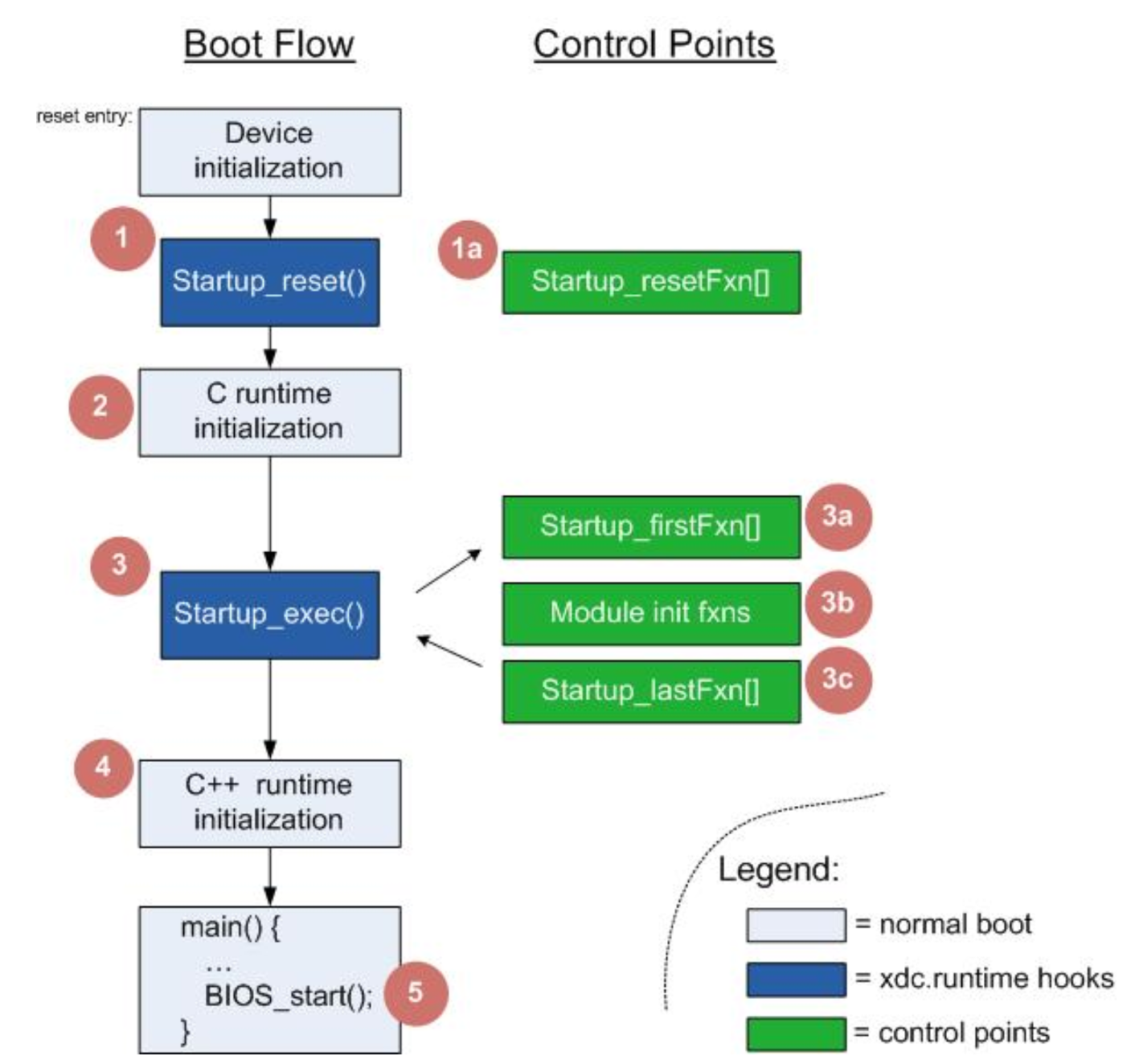Other Parts Discussed in Thread: SYSBIOS
Tool/software: Code Composer Studio
CCS 6.1.1.00022
SYS/BIOS 6.35.6.56
XDC Tools 3.25.4.88
CG Tools 6.2.11
UIA 1.4.0.06
OS: Windows 10 64-bit
I'm trying to set up UIA to use the 28335's external memory as a buffer for log data. I've got the following in the config file.
/* System Analyzer (UIA) Setup */ var loggerCircBufParams = new LoggerCircBuf.Params(); loggerCircBufParams.transferBufSize = 20480; loggerCircBufParams.bufSection = 'loggerBuf'; var loggerCirc = LoggerCircBuf.create(loggerCircBufParams); LoggingSetup.sysbiosLogger = loggerCirc;
The project builds and executes, but when I try to boot up the System Analyzer, I get the following error message.
The XDC tools GUI shows my event upload mode as JTAG Stop Mode. Is this simply unsupported with this version of UIA?



